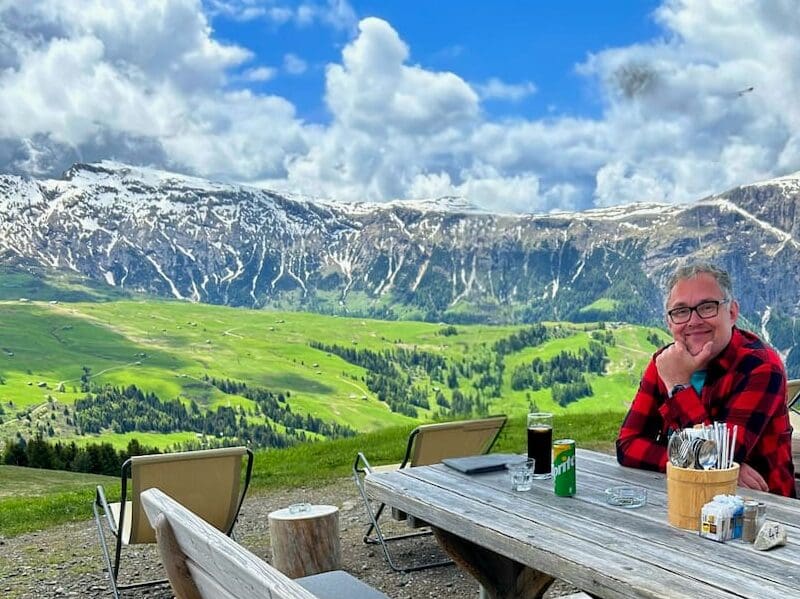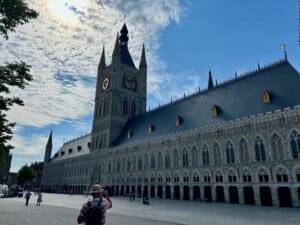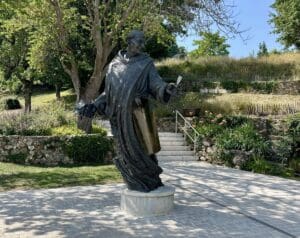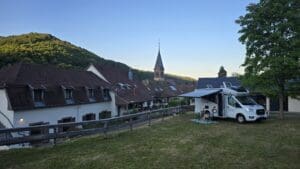When we write our posts, the biggest challenge is to summarise an experience in a reasonably concise way. You have to leave out a lot of details or the text will be far too long. In this case, however, it was not the text that was the problem, but rather the large number of photos. We took several hundred pictures and most of them were good enough to fit in any post. Wherever you turn, it's crazy beautiful and it almost feels like you're suffering from a kind of chronic photo filter... 🙂
By the way, we had a good laugh going through the pictures and found the one you see above. The colours and contrasts are so strong that it looks like I'm sitting in front of a backdrop or in a room with one of those hideous wallpapers that were so popular in the 80s.
This is part four of our trip to the Dolomites. You can read Part 1, Part 2, Part 3, and Part 5 here.

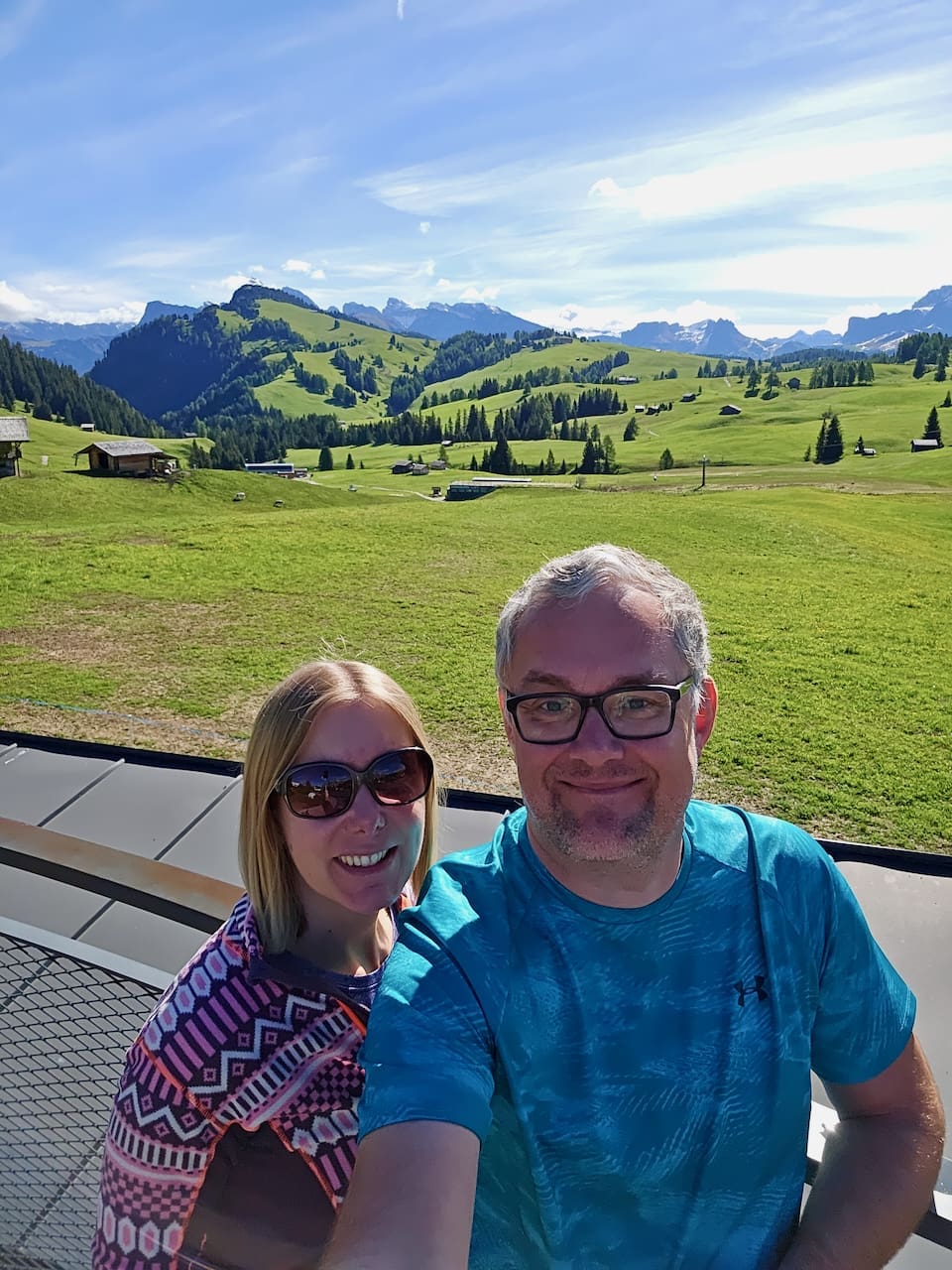
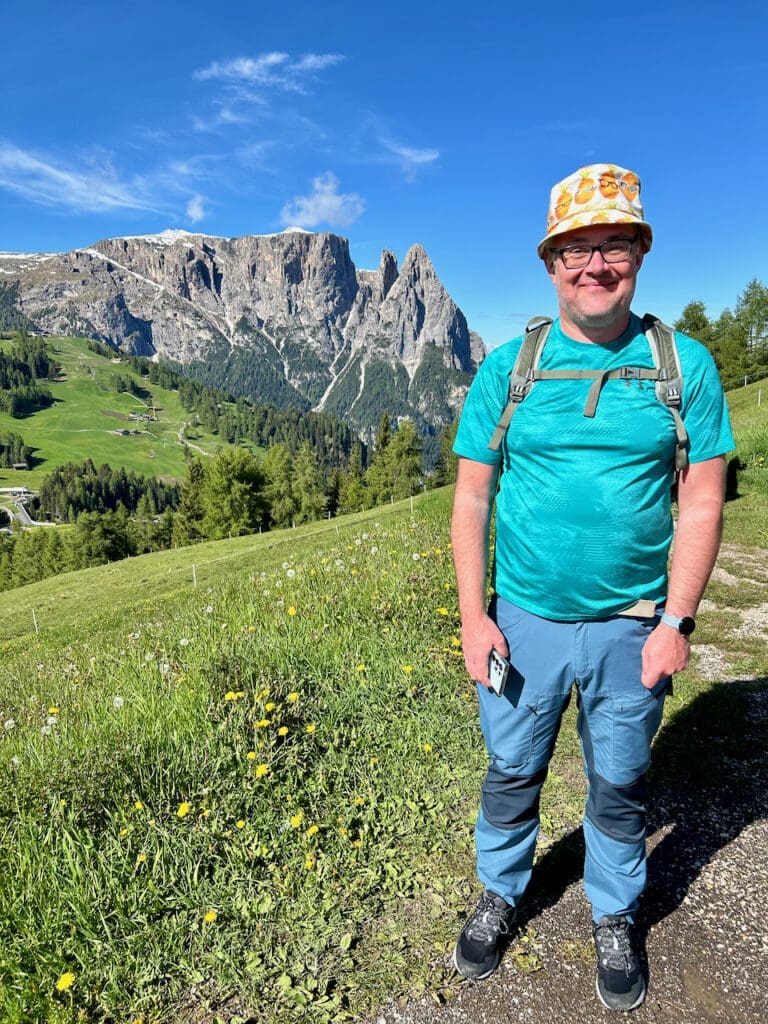
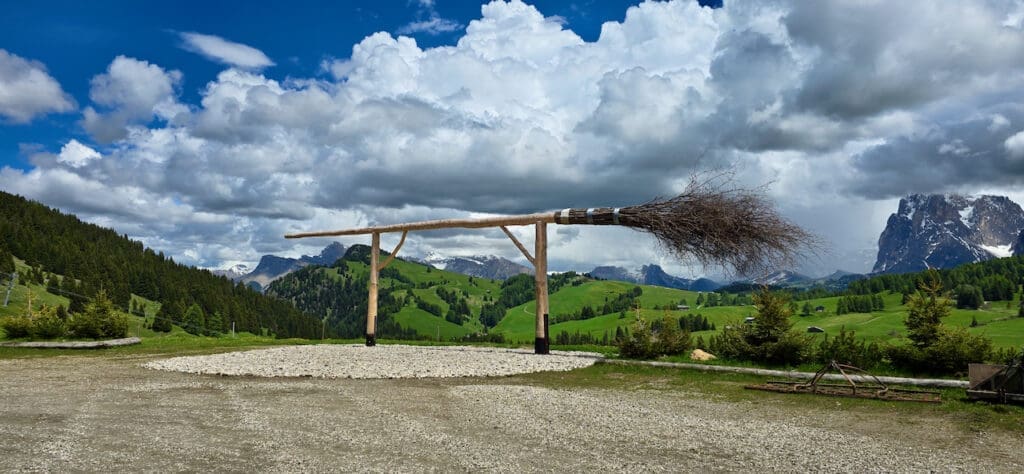
Alpe di Siusi, or Seiser Alm as the Germans call it, is the largest 'alpine meadow' in the world, stretching over 56 square kilometres (!?!). The lowest point is 1600 metres and the highest 2958 metres. As we mentioned earlier, it is easiest to take the cable car up to the plateau and then hike from there. As we were staying in Bolzano, we chose the one that starts from Seis am Schlern but there are several other options if you come from the north or south.
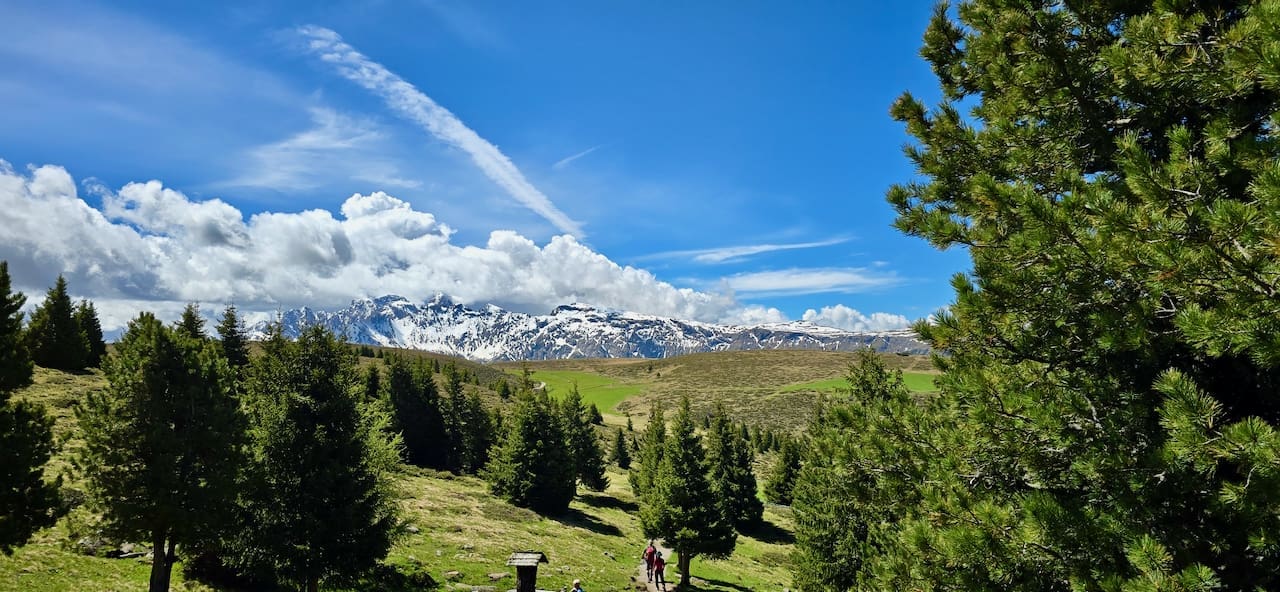

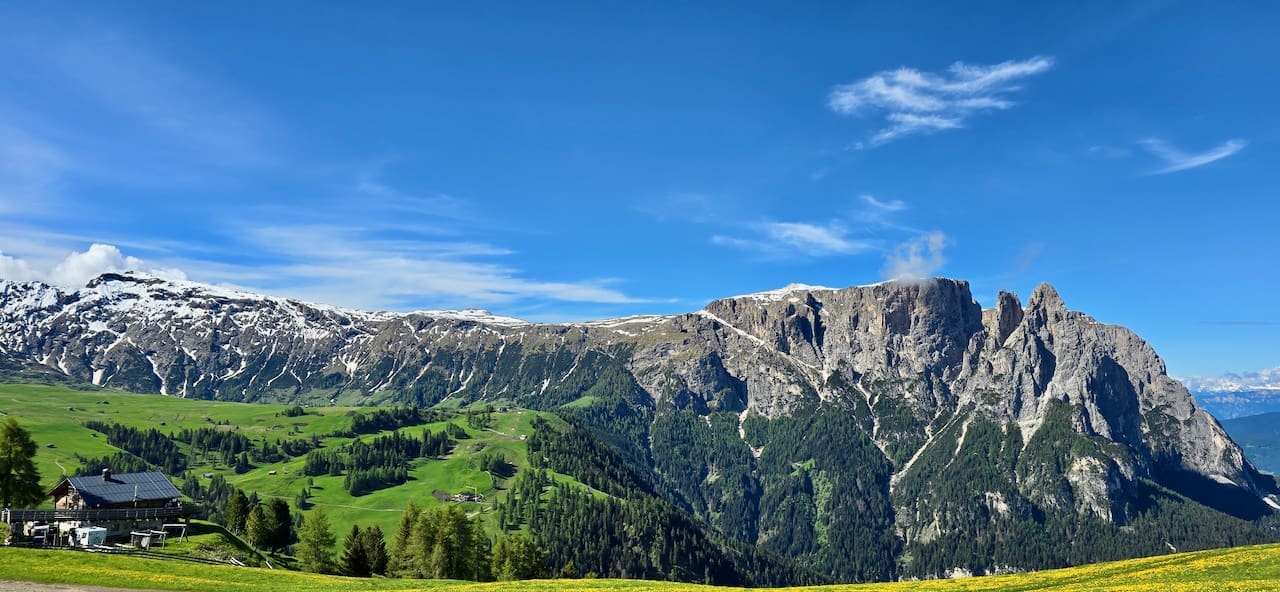
There are no less than 450 km of hiking trails and also a number of lifts, which means that you can spend several days exploring this area. To the right of the map you can also see the area we wrote about in the last the post including Lago di Carezza.
It is really noticeable that you are at high altitude as you get out of breath at the slightest uphill. Once up, however, you get your reward with absolutely magical views. We started with the western part, Puflatsch, which has a pleasant climb of approx. 400 metres spread over just over a mile. It may sound strange that I do not give a more specific distance but it was actually something we reacted to that they never put out the distance, neither on maps nor signs. However, there were time estimates from one sign to another but it feels like they were somewhat arbitrary as the pace varies greatly from person to person.
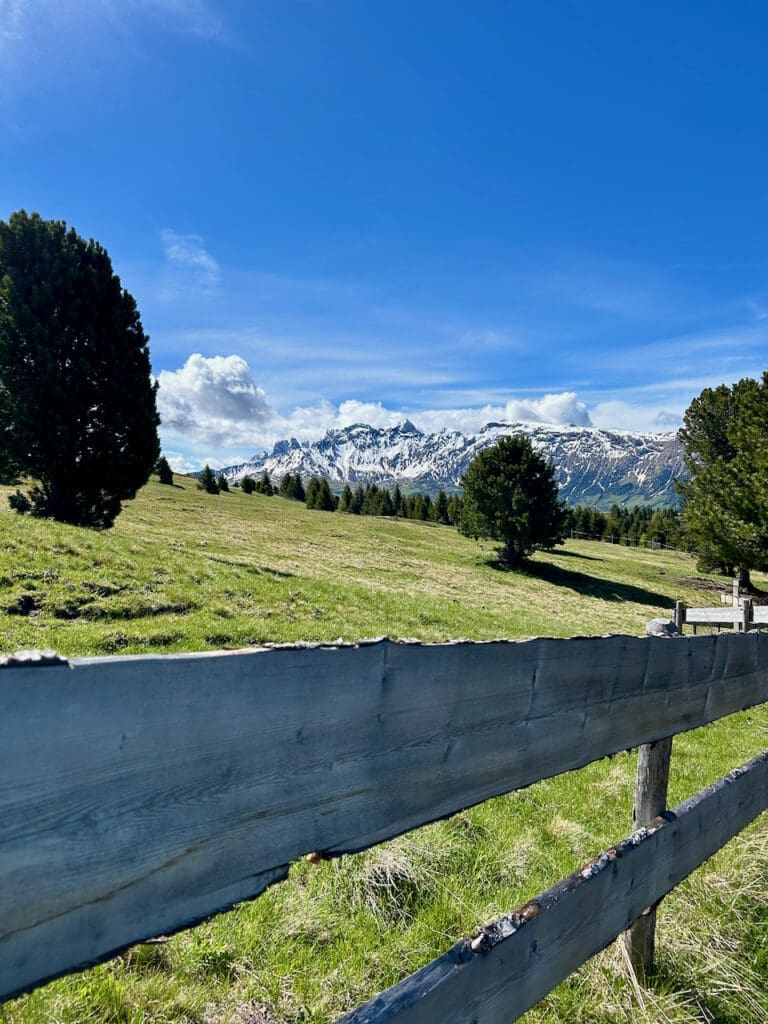



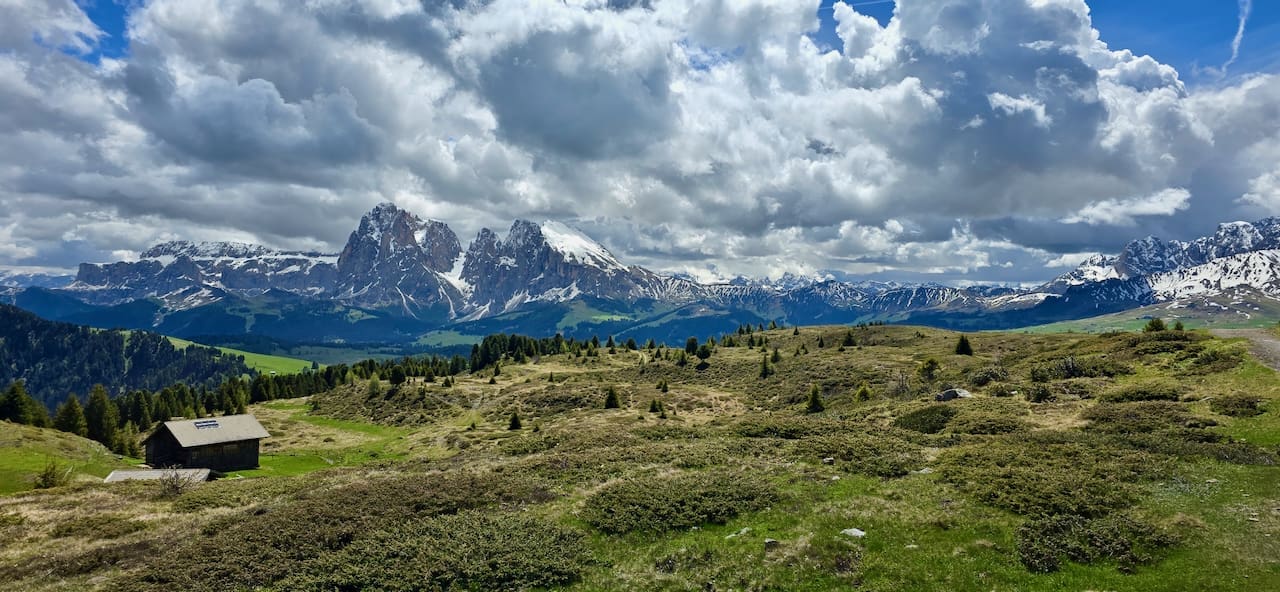
There are more than 50 refugios in the area and on this first little trip to Puflatsch we had both an apple strudel at Arnikahütte and a lunch at Bergrestaurant Puflatsch. I felt unusually brave trying dumplings for the first time. Maybe not a favourite but with a little more spices and why not a small clove of garlic, the dish still has potential. After dinner we found some ridiculously comfortable sun loungers with a pretty decent view so a quick lunch turned into a long wine lunch instead.
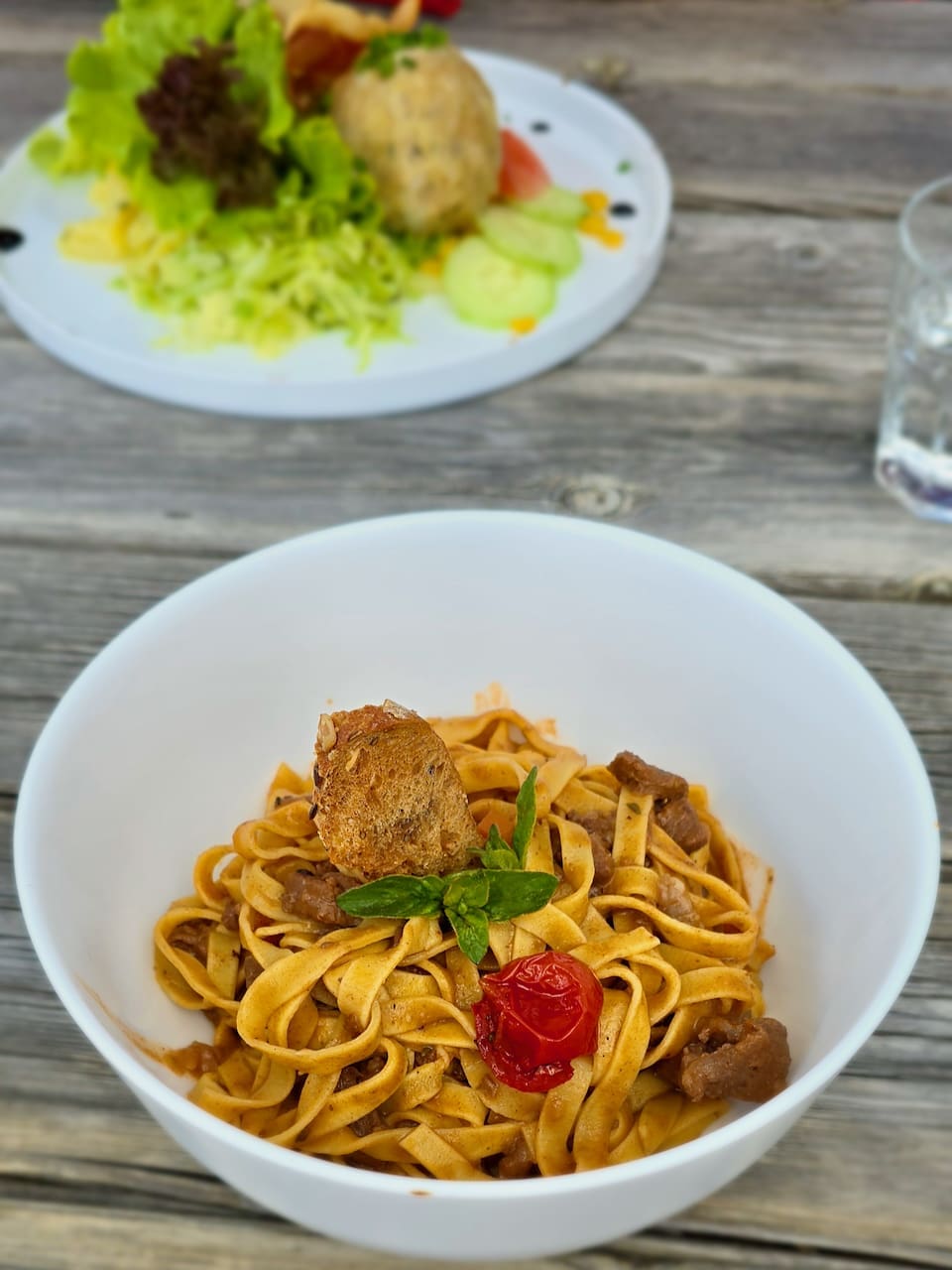
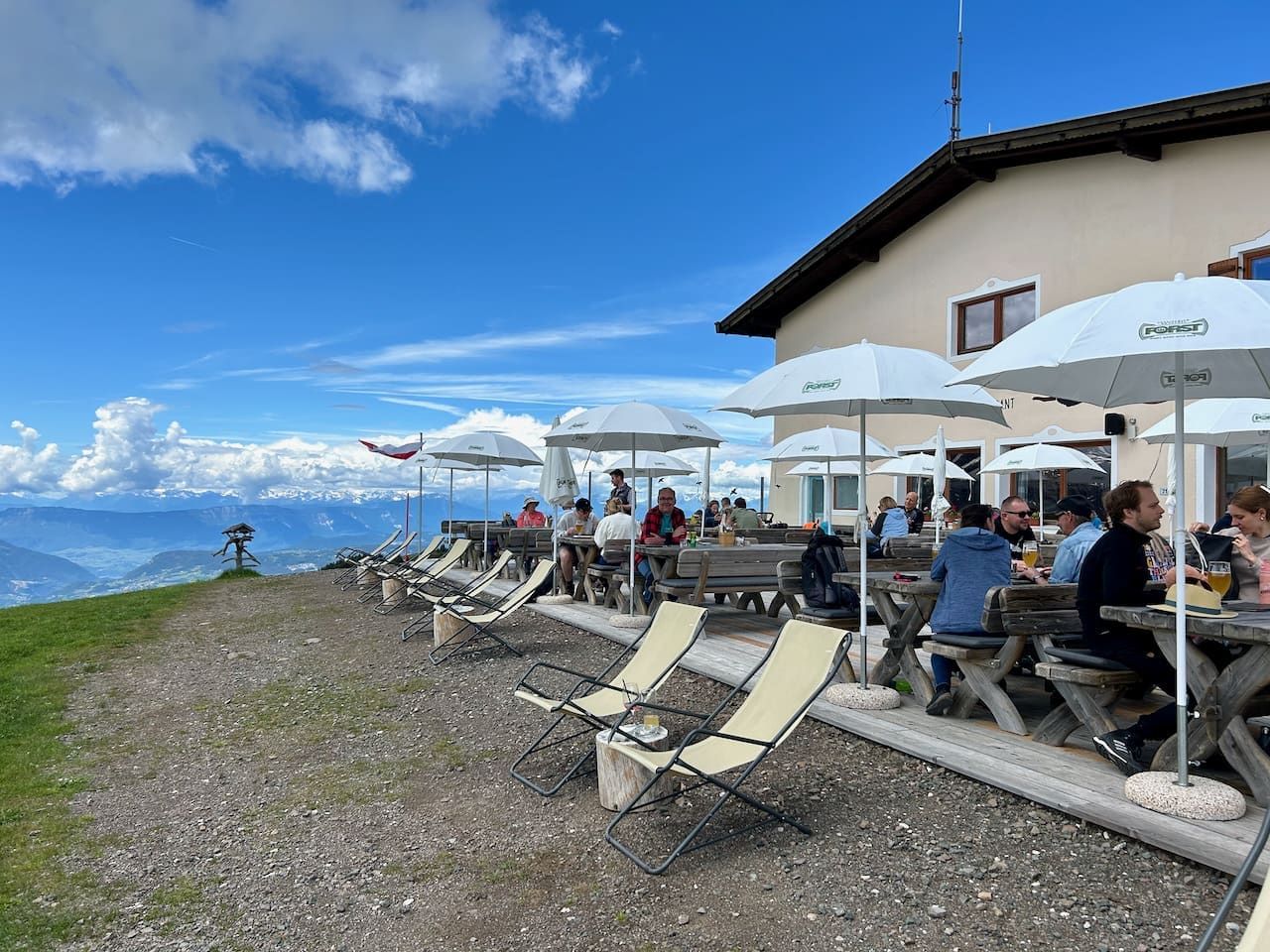
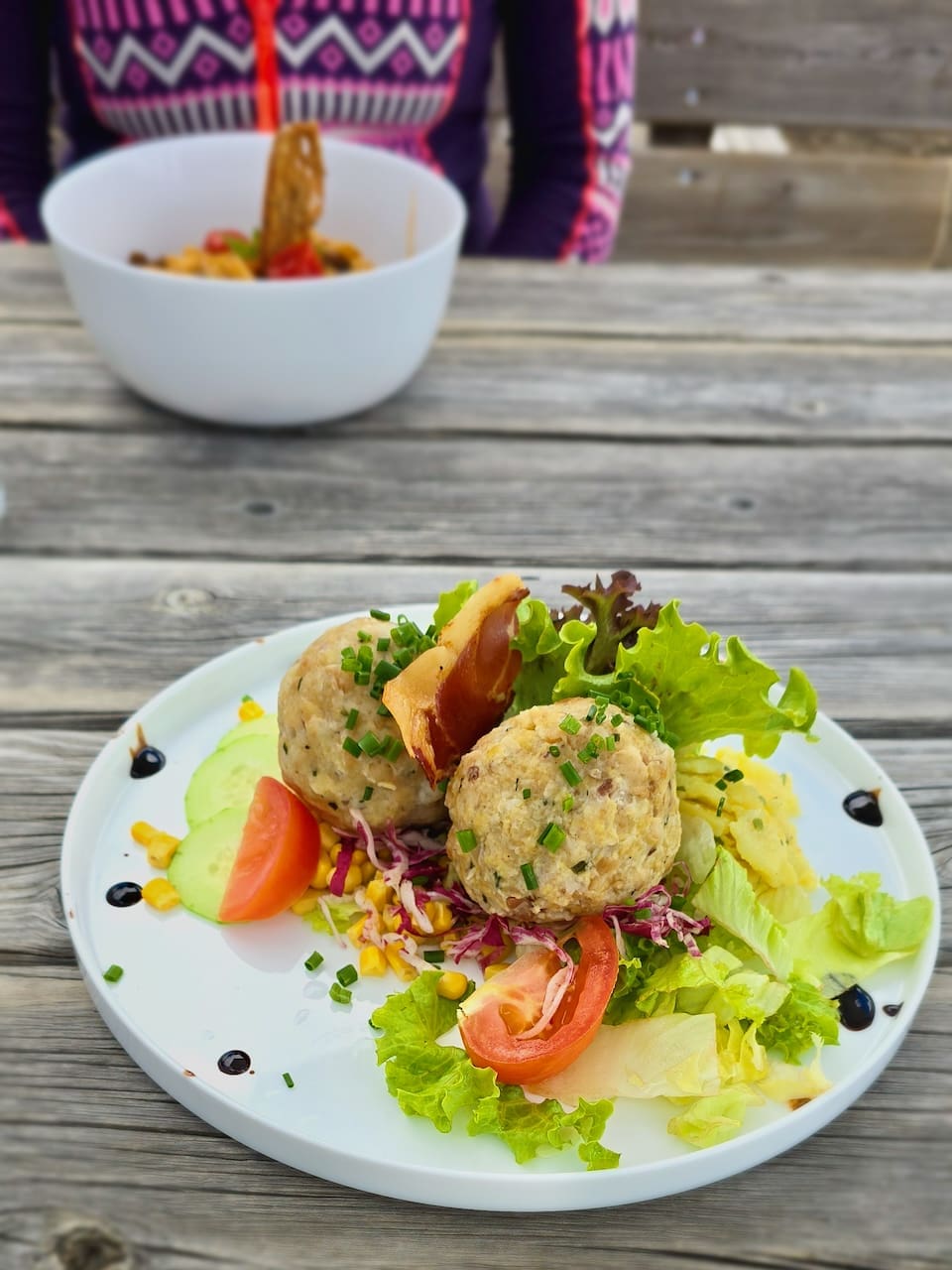
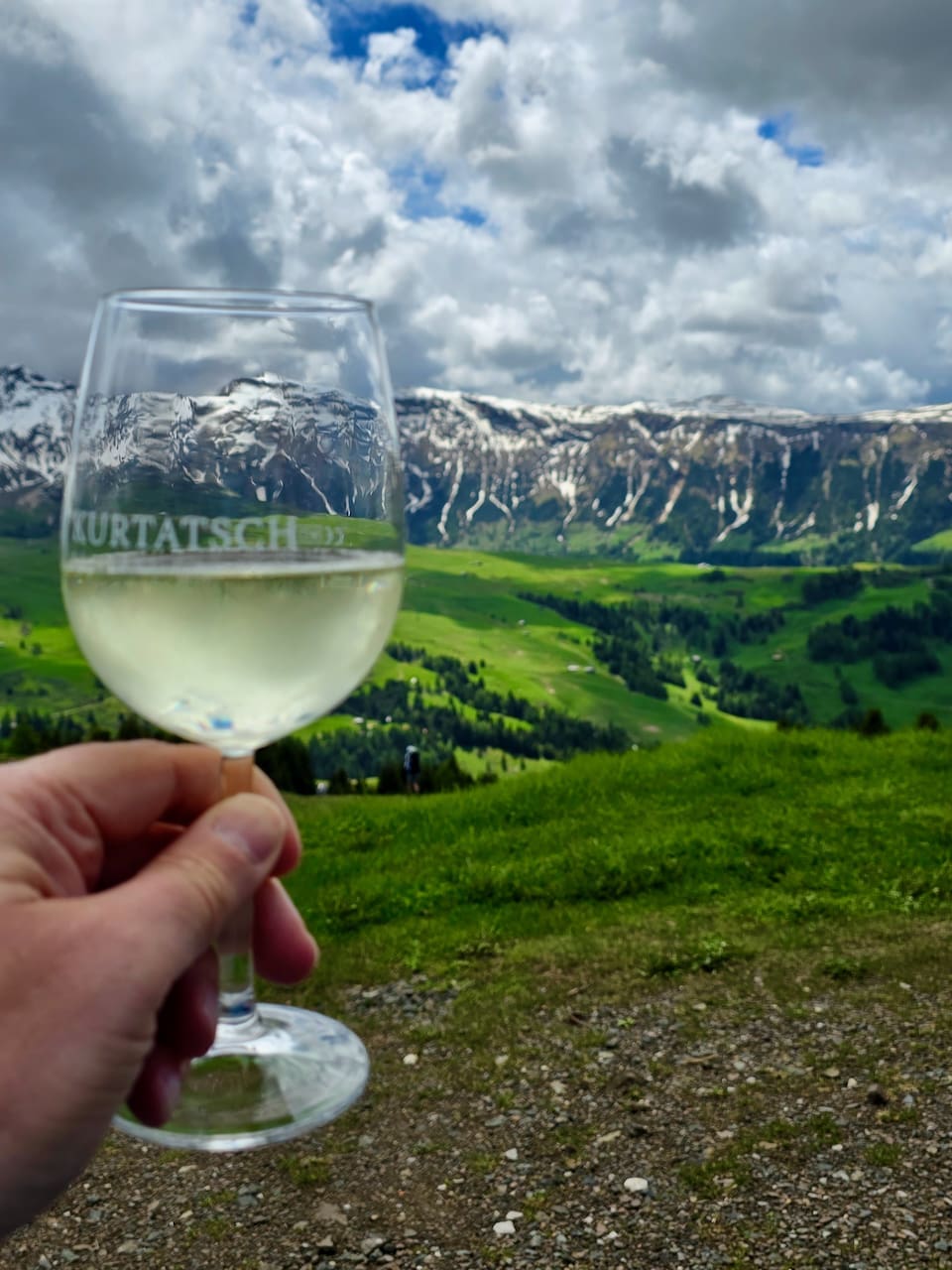

As the dumpling (and maybe the wine) left its mark, we chose to take the lift up to the top on the eastern side. Once up, we found a new refugio that served excellent Sacher cake. Alpenhotel Panorama was one of the first places to establish itself up here and made a name for itself in the 19th century, partly because of its mechanical 'sledges' that took visitors up the mountain. In the 20th century, the mountain's first ski lift was also built here, further enhancing the hotel's importance.
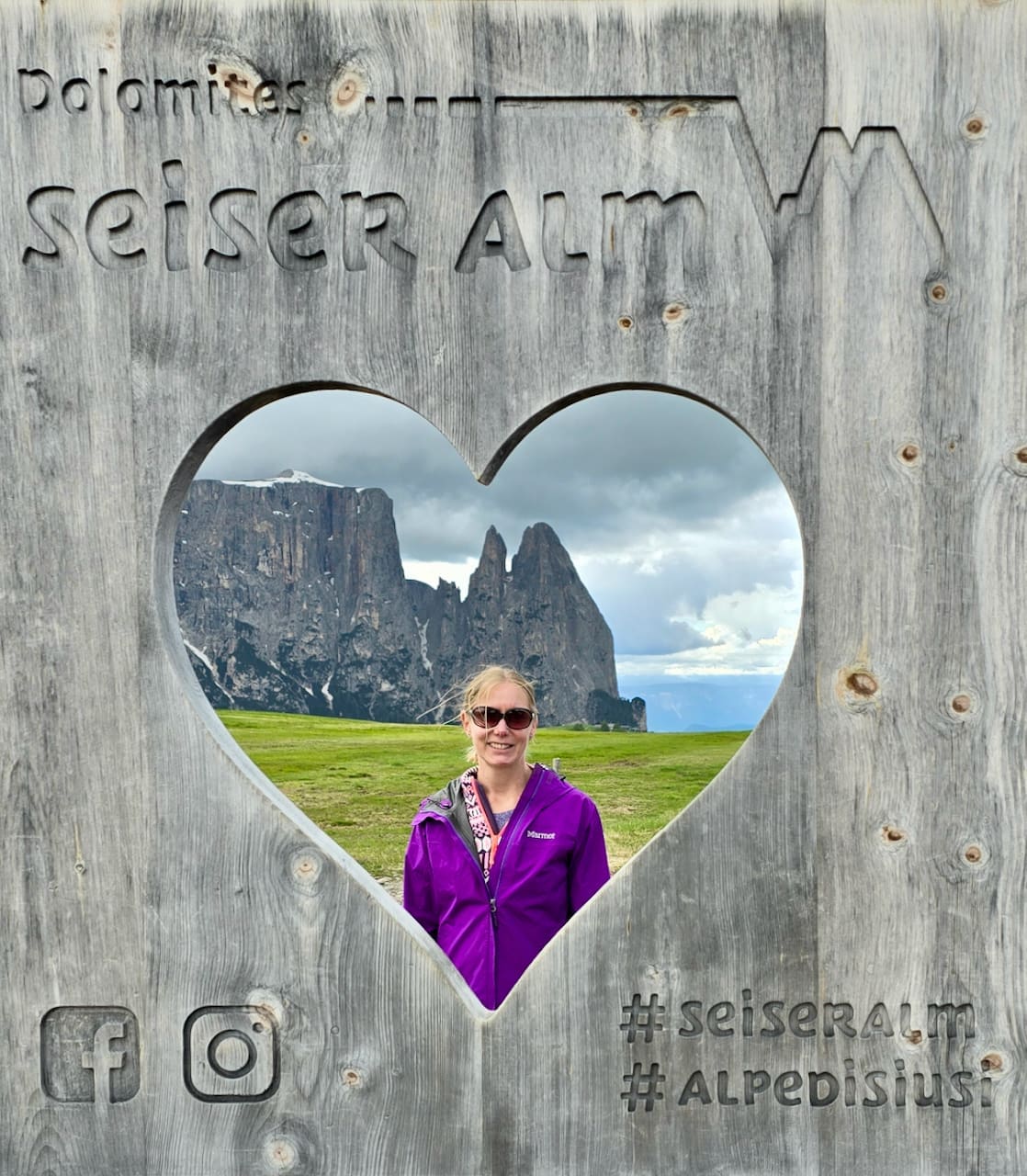

In the middle of the picnic, much darker clouds moved in and as we intended to hike down the mountain, we had to speed up a bit. The pace down the mountain increased steadily as the clouds looked increasingly threatening. By the time the first rain came we were almost up to some kind of jog but it paid off as the sky opened up just as we entered the tourist centre at the bottom.
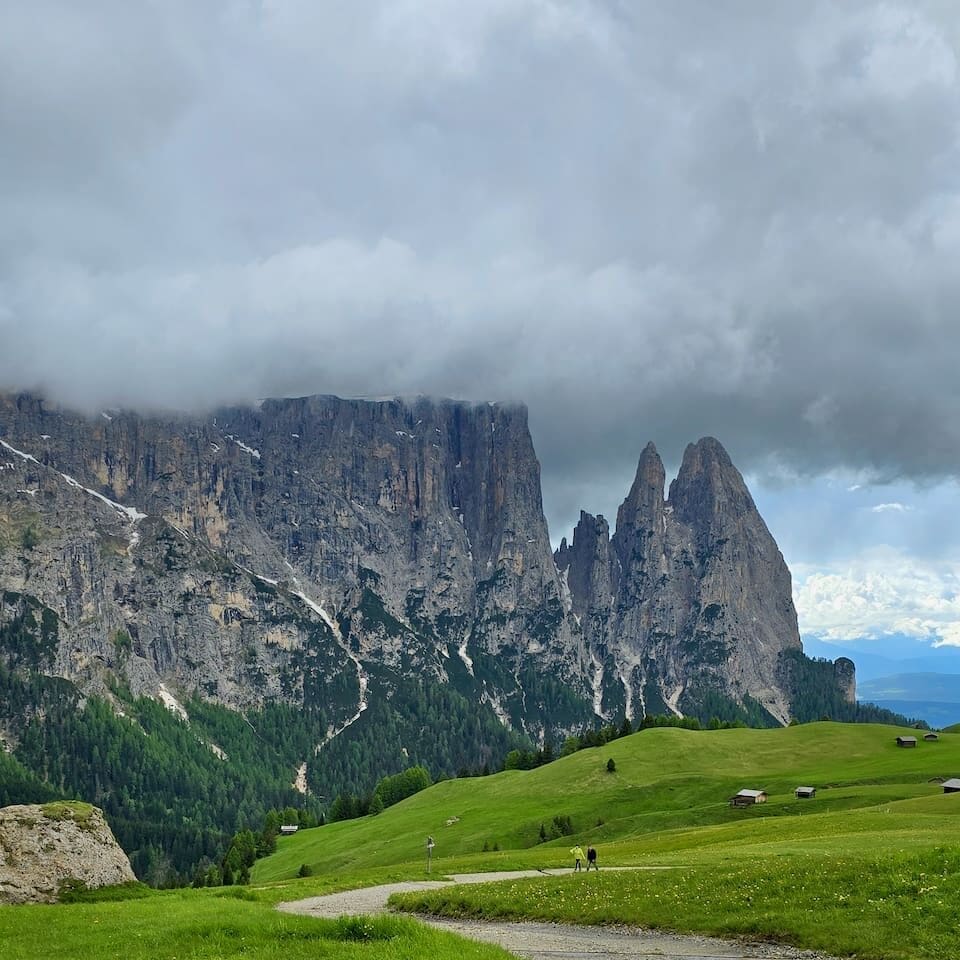
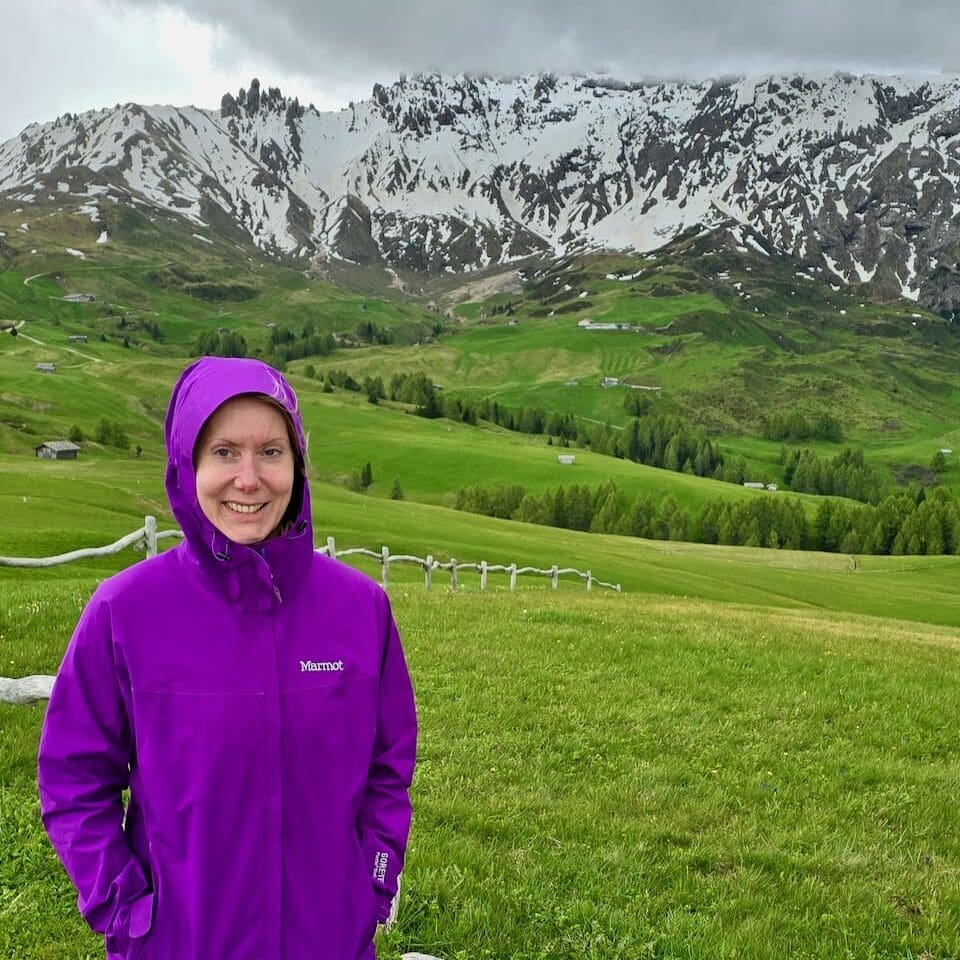
All in all, it was an amazing day both in terms of weather and experience. I have been waiting 20 years to visit the Dolomites and after a day like this I feel it exceeded expectations by far. This is by far the most amazing nature experience I have ever had. I recommend everyone to visit the Dolomites at least once as it is a memory for life. If they had only spiced up the dumplings, it would undoubtedly have been a ten... 🙂
This is part four of our trip to the Dolomites. You can read Part 1, Part 2, Part 3, and Part 5 here.
